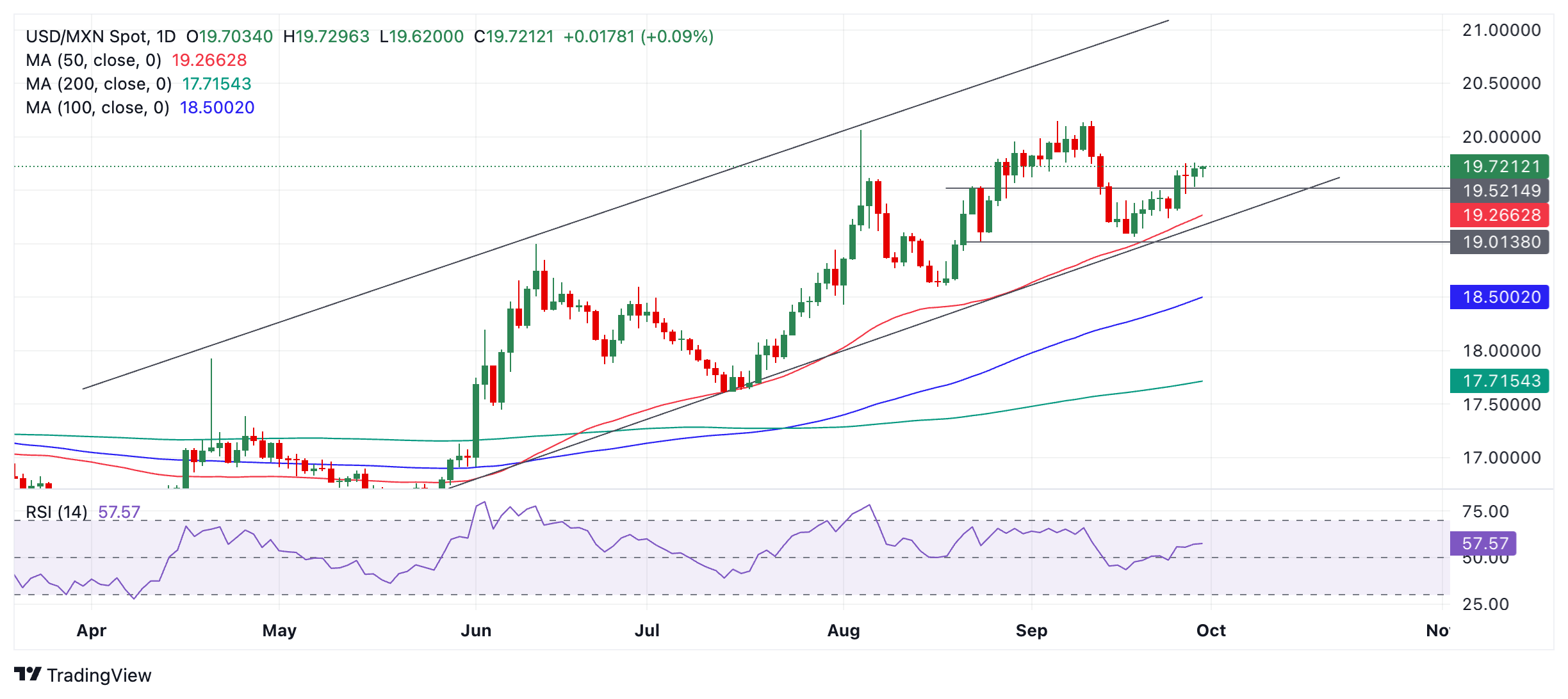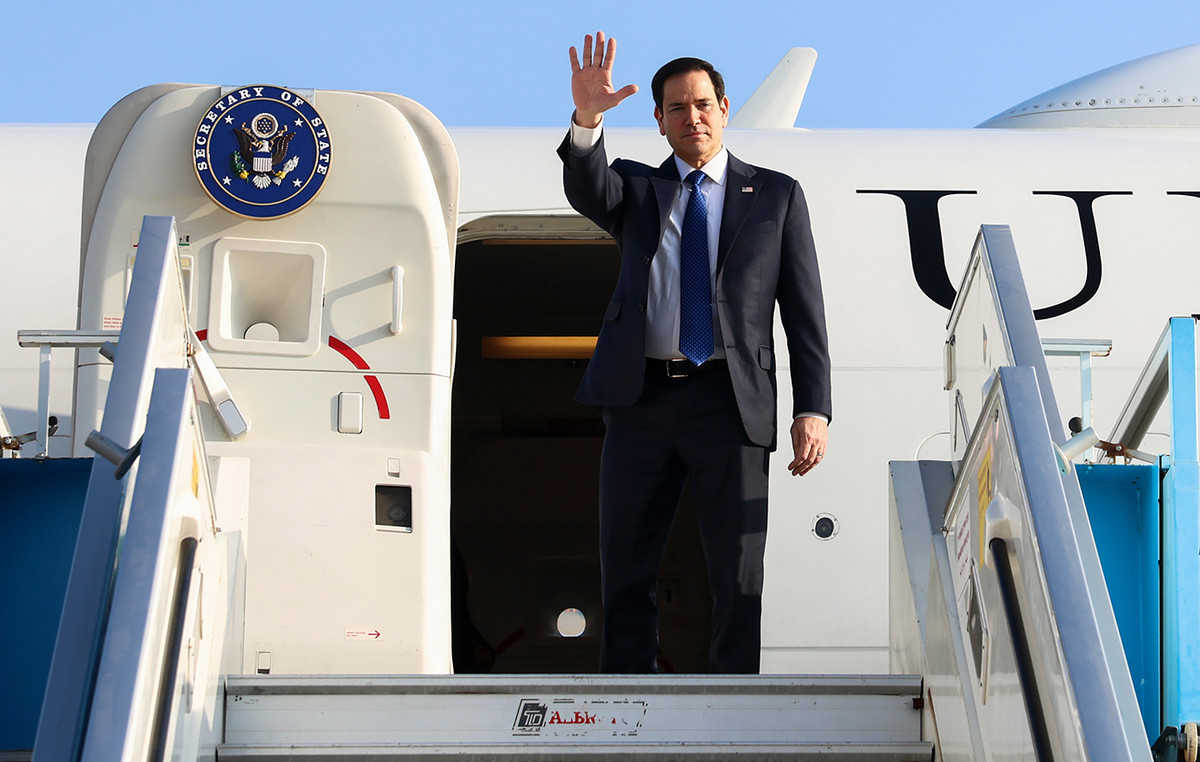- The Mexican peso fluctuates between slight gains and losses on Monday.
- The week promises to be busy for operators of the main Peso pairs, given the scheduled events and data.
- USD/MXN extends its steady rise within an ascending channel.
The Mexican Peso (MXN) oscillates between slight gains and losses on Monday after falling an average of 1.5% on its major peers last week. The decision of the Bank of Mexico (Banxico) to cut interest rates by 25 basis points (0.25%) at its September meeting on Thursday, bringing the official interest rate to 10.50%, as well as a revision to The lowering of its forecasts for the economy contributed to the devaluation of the Peso in all areas.
Data showing an expanding trade deficit added negativity around the Mexican peso after official figures showed it widened to $4.868 billion in August from $1.278 billion a year ago. These figures significantly exceeded market expectations of a $0.5 trillion deficit and hit a new two-year high.
The proximity of the United States (US) elections and the prospects of former President Donald Trump winning and then imposing an “America First” agenda, with negative implications for trade with Mexico, further heighten concerns about Mexico’s persistent trade deficit, which amounts to $10,438 million in the first eight months of 2024.
Mexican Peso traders prepare for a week full of data
The Mexican peso swings between slight gains and losses on Monday ahead of a busy week of macroeconomic data releases and key events for its main pairs: the US dollar (USD), the Euro (EUR) and the British pound (GBP).
On Monday, speeches by European Central Bank (ECB) President Christine Lagarde and Federal Reserve (Fed) Chair Jerome Powell could impact the EUR and USD, respectively. Recent weak data from the Eurozone, in particular, is leading to speculation in the markets that the ECB will have to be more aggressive in reducing interest rates to help growth, which could weaken the Euro. In Mexico, August Fiscal Balance data will be published, revealing the government’s spending deficit.
Preliminary Eurozone inflation data for September on Tuesday, and then Non-Farm Payrolls (NFP) on Friday, are other key data releases related to the major Peso pairs. The NFP release will be closely watched for signs of a slowdown in the labor market after the Fed made clear it is now taking into account its mandate to provide full employment as part of its decision-making on interest rates. interest.
Technical Analysis: USD/MXN trends upward within the channel
The USD/MXN rises steadily within its ascending channel as it continues its short, medium and long-term bullish trend.
USD/MXN Daily Chart
Friday’s close above 19.68 (September 25 high) provided more bullish certainty on the pair’s near-term upside bias towards a target at 20.15, the year’s high reached in early September.
A further break above 19.76 (the September 27 high) would create a higher high and provide even more evidence of an extension of the uptrend.
The Mexican Peso FAQs
The Mexican Peso is the legal tender of Mexico. The MXN is the most traded currency in Latin America and the third most traded on the American continent. The Mexican Peso is the first currency in the world to use the $ sign, prior to the later use of the Dollar. The Mexican Peso or MXN is divided into 100 cents.
Banxico is the Bank of Mexico, the country’s central bank. Created in 1925, it provides the national currency, the MXN, and its priority objective is to preserve its value over time. In addition, the Bank of Mexico manages the country’s international reserves, acts as a lender of last resort to the banks and advises the government economically and financially. Banxico uses the tools and techniques of monetary policy to meet its objective.
When inflation is high, the value of the Mexican Peso (MXN) tends to decrease. This implies an increase in the cost of living for Mexicans that affects their ability to invest and save. At a general level, inflation affects the Mexican economy because Mexico imports a significant amount of final consumption products, such as gas, fuel, food, clothing, etc., and a large amount of production inputs. On the other hand, the higher the inflation and debt, the less attractive the country is for investors.
The exchange rate between the USD and the MXN affects imports and exports between the United States and Mexico, and may affect demand and trade flows. The price of the Dollar against the Mexican Peso is affected by factors such as monetary policy, interest rates, the consumer price index, economic growth and some geopolitical decisions.
The exchange rate between the USD and the MXN affects imports and exports between the United States and Mexico, and may affect demand and trade flows. The price of the Dollar against the Mexican Peso is affected by factors such as monetary policy, interest rates, the consumer price index, economic growth and some geopolitical decisions.
Source: Fx Street
I am Joshua Winder, a senior-level journalist and editor at World Stock Market. I specialize in covering news related to the stock market and economic trends. With more than 8 years of experience in this field, I have become an expert in financial reporting.








